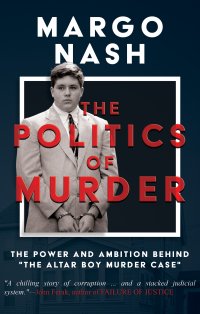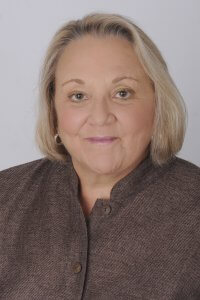True Crime Author Margo Nash On Her Writing Process For THE POLITICS OF MURDER


Once I’d committed to writing the story of Eddie O’Brien’s arrest, legal journey and trial, I sat down at the computer and wondered exactly how one organizes a book. Should I start with an outline? I realized I had no idea how to organize a book. I didn’t know anyone who had written a book who I could ask. Finally I decided that perhaps I should just start writing and see where that took me.
I knew I wanted to start with the day of Janet Downing’s murder from Eddie’s point of view. That led seamlessly into telling the story of the same day from another important person’s point-of-view, Gina Mahoney, who spent the entire day with Janet before she was murdered so brutally the night of July 23, 1995. The book’s organization evolved organically, as I introduced the main characters in the story. It made perfect sense, then, when I moved to the “legal” part of the story to tell it as it unfolded day by day during the long days of the trial.
I recently remarked to a colleague “the book really wrote itself.” Letting the book evolve during the writing process, turned out to be the most authentic way to write The Politics of Murder.
As I moved through the trial transcripts, inch by inch, I was struck by something I had not even considered at the outset of the story: what an overwhelming experience it is to be a juror. I had to translate the legalese language for the reader, so the book didn’t sound like a textbook. But no one did that for the jurors. They were thrown into a world where they were bombarded with legal terms they didn’t understand (or worse, misunderstood), instructions that actually were from a legal textbook. They had to sit for days through the most complex scientific testimony that used acronyms like RFLP and PCR, neither of which was made clearer by its full name. And they couldn’t take any notes. Eleven full days of trial testimony and exhibits and chalks, followed by two hours of closing arguments, then three hours of non-stop jury instructions on the law that they were bound to adhere to in coming to a unanimous decision. At one point I sent the entire 86 pages of Jury Instructions to a friend to ask her how much of them I needed to include in the manuscript. She wrote back:

“Saying that they are tedious, confusing, mind-numbing, and seemingly contradictory just doesn’t capture it.”
I knew then that I wanted to give the reader a sense of just how hard it is to be a juror, especially in a case where your decision may send a child to jail for life. Thus, the story evolved to include something I’d never even considered including in the book.
We (lawyers and judges) expect much more of jurors than we like to admit. What’s worse is that we constantly make fun of them: “Jurors are people who are too stupid to get out of jury duty.”
I gained a whole new respect and understanding of jurors in writing this book. I hope that you will too.
THE POLITICS OF MURDER: The Power And Ambition Behind “The Altar Boy Murder Case” is coming from WildBlue Press on November 22, 2016! Pre-order your copy today to save!
https://wildbluepress.com/politics-of-murder-margo-nash-writing-process/

